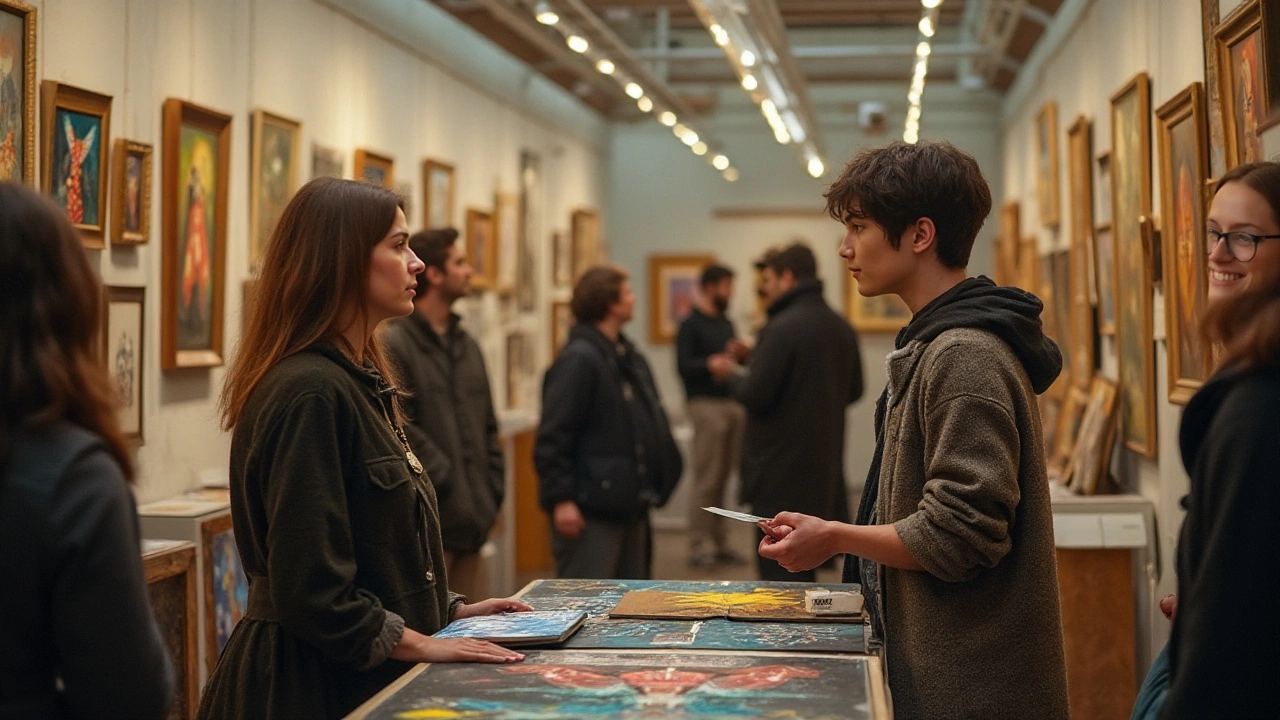Art Gallery Commission: A Practical How‑To
Thinking about adding a custom piece to your gallery? Commissioning art can feel like a big step, but it’s really just a series of simple choices. You pick an artist, agree on a price, set a timeline, and get a finished work that fits your space and audience. Below you’ll find the basics you need to get started without surprise fees or misunderstandings.
Why commission art for your gallery?
A commission gives you control over size, subject, and style. Unlike buying off the shelf, you can match the piece to a specific wall, a curatorial theme, or a community event. It also helps you build relationships with local creators, which can bring fresh visitors and media buzz. Many galleries report higher sales after showing a bespoke work because collectors see the unique story behind it.
Step‑by‑step guide to a successful commission
1. Define the brief. Write down what you want: dimensions, medium (oil, acrylic, sculpture), subject matter, and any visual references. Keep the language clear – “a 120 × 180 cm oil portrait of a young dancer in motion” works better than vague ideas.
2. Find the right artist. Browse portfolios on platforms like Instagram, local art schools, or our own artist network. Look for work that matches your brief and a style you love. When you find a candidate, check their recent commissions – do they finish on time? Are clients happy?
3. Talk budget early. Artists usually charge by size, complexity, and reputation. For a mid‑size oil painting in the UK, expect £1,000‑£3,000. Sculptures can range higher depending on material. Ask for a detailed quote that lists studio fees, materials, and any travel costs.
4. Draft a contract. A simple contract should cover: description of the work, deadline, payment schedule (often 50 % upfront, 50 % on delivery), rights (who can reproduce the image), and what happens if either side cancels. Having everything in writing protects both you and the artist.
5. Keep communication open. Ask for progress photos every few weeks. If the artist suggests tweaks, discuss them quickly – small changes are easier to manage early on.
6. Plan installation. Once the piece arrives, coordinate hanging hardware, lighting, and insurance. Some artists help with installation, especially for large sculptures. Make sure the wall can support the weight; a quick check with a contractor avoids accidents.
7. Promote the new work. Share behind‑the‑scenes shots on social media, host a launch event, and credit the artist in all press releases. This not only celebrates the piece but also adds value to future sales.
Commissioning art doesn’t have to be intimidating. Break it down into these clear steps, stay honest about your budget, and keep the dialogue friendly. You’ll end up with a piece that feels tailor‑made for your gallery and a new partnership that can lead to more exciting projects down the road.

4 Dec 2024
Understanding the commission rates taken by galleries is crucial for artists planning to showcase their work. These rates can vary widely, typically ranging from 40% to 60%, but several factors influence these numbers. This article explores what determines the cut galleries take, how it impacts artists, and offers insights on navigating these financial agreements effectively. Artists can learn to negotiate terms and maximize exposure and profit from gallery partnerships.
Continue reading...
